Banteay Srei at Angkor
by Louis Finot & Henri Parmentier & Victor Goloubew
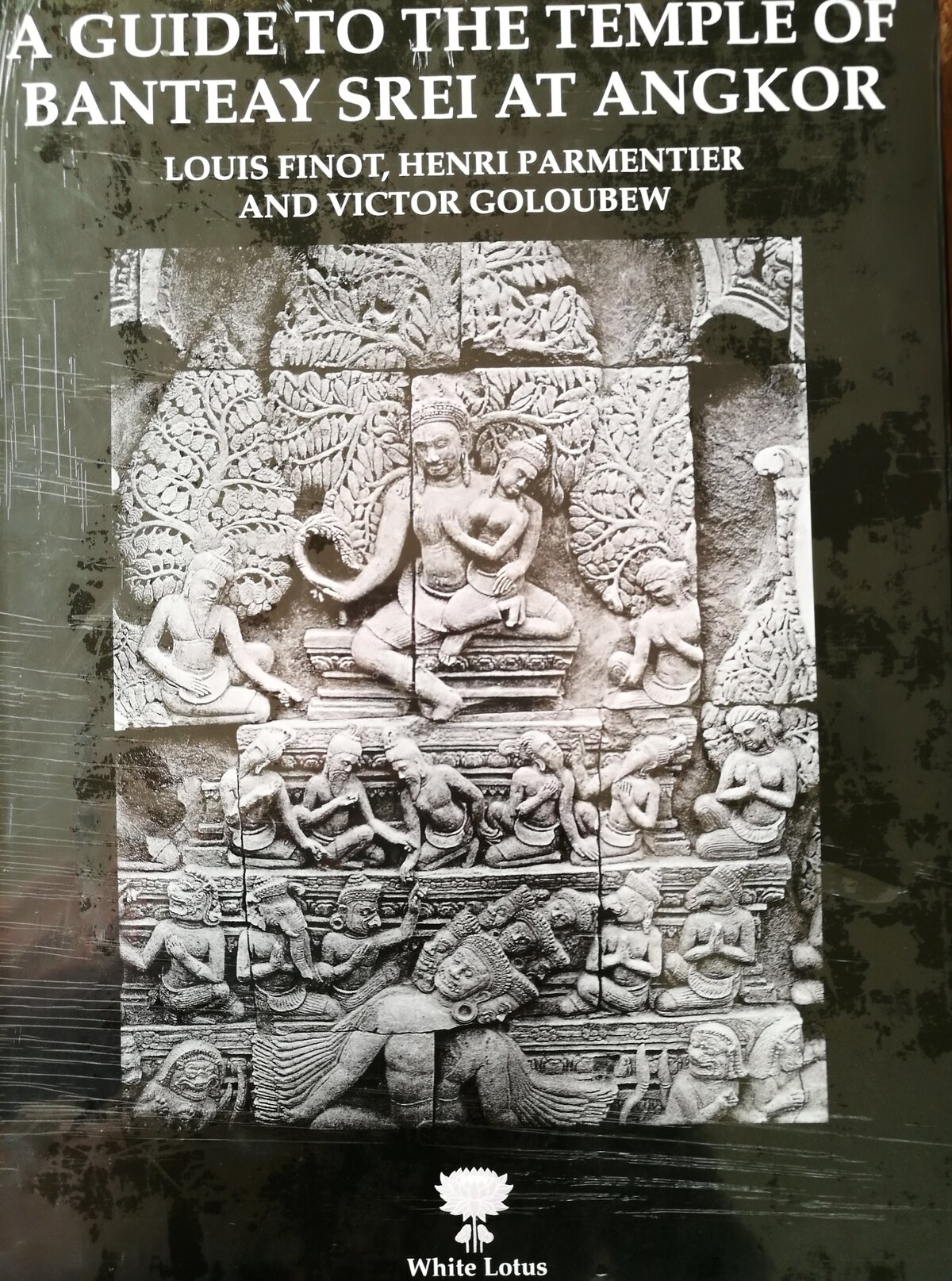
Type: hardback
Publisher: White Lotus
Edition: English translation of the 1926 French guide. (#119 at Angkor Database Library)
Authors: Louis Finot, Henri Parmentier & Victor Goloubew
Pages: 241
ISBN: 978-9747534221
Language : English
Originally published in 1926, this is the first study of the "Women's Temple", an exquisite edifice with rich adornements. Written a decade after the temple's rediscovery, these three essays by eminent French scholars discuss its architecture, iconography, history, and dating.
The section on the Sanskrit and Khmer inscriptions found at the site is an invaluable tool for understanding this period of Khmer history and for illuminating aspects of its religious and daily life. Line drawings and photographs illustrate the study.
 Photo Sreyline Van Bacha
Photo Sreyline Van Bacha
Tags: Banteay Srei, Hinduism, women, Khmer history
About the Authors
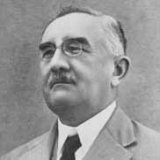
Louis Finot
French archeologist, Indianist, philologist and researcher Louis Finot (1864, Bar sur Aube -1935, Toulon, France) was named in 1898 director of the archaeological mission in Indochina, which would become two years later the Ecole française d'Extrême-Orient (EFEO). He remained its director until 1926, then from 1928 to 1929 when he had to substitute Léonard Aurousseau, George Coedes taking over in 1929. In 1933, after leaving Indochina in January 1930, he became a member of the Académie des Inscriptions et Belles-Lettres.
Louis Finot wrote extensively on sanskrit, pali, lao and khmer linguistics, as well as the religious practices of the Cham people. His contribution to the study of Khmer history, architecture and epigraphy is widely recognized.
Founder of the Bulletin de l’École française d’Extrême-Orient (1901) and Bulletin de la Commission archéologique de l’Indochine (1908), Louis Finot extensively published, his major published works including: 1896. Les Lapidaires indiens. - 1900. Inventaire sommaire des monuments chams de l’Annam (with E. Lunet de Lajonquière). - 1901. Rāstrapālapariprcchā sūtra du Mahayana. - 1910. Les populations indigènes de l’Annam. Étude de sociologie coloniale (with R. Maunier, E. Chauffard, L. Boulloche et Ch. Prêtre). - 1910-1914. Documents historiques et géographiques relatifs à l’Indochine publiés sous la direction de MM. H. Cordier et L. Finot. - 1917. « Recherches sur la littérature laotienne » (in Bulletin de l’École française d’Extrême-Orient). - 1920. Çantiveda. Bodhicaryaâvatāra. La marche à la lumière (translation). - 1923. Les questions de Milinda. Milinda-Pañha (annotated translation). - 1926-1931. Inscriptions du Cambodge, 4 vol. - 1926. Le temple d’Içvarapura (Bantāy Srěi, Cambodge). - 1929. Le temple d’Angkor Vat. I, Architecture du monument. - 1929. Le bouddhisme, son origine, son évolution. - 1933. Stèles historiées du Cambodge.
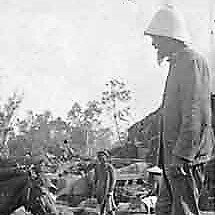
Henri Parmentier
Henri Parmentier (3 Jan.1870, Paris -22 Feb. 1949, Phnom Penh) was a French architect, art historian and archaeologist, one of the first European specialists in the archaeology of Indochina. He has documented, depicted and preserved many Khmer, Cham and Lao monuments.
Head of the EFEO in Cambodia during 28 years, he married in 1905 novelist and journalist Jeanne Leuba, with whom he co-published several accounts. The couple endured the Japanese occupation of Cambodia with the rest of the small Phnom Penh French colony during World War II. He died in Phnom Penh, still actively contributing to Khmer, Cham and Laotian studies after his official retirement in 1962.
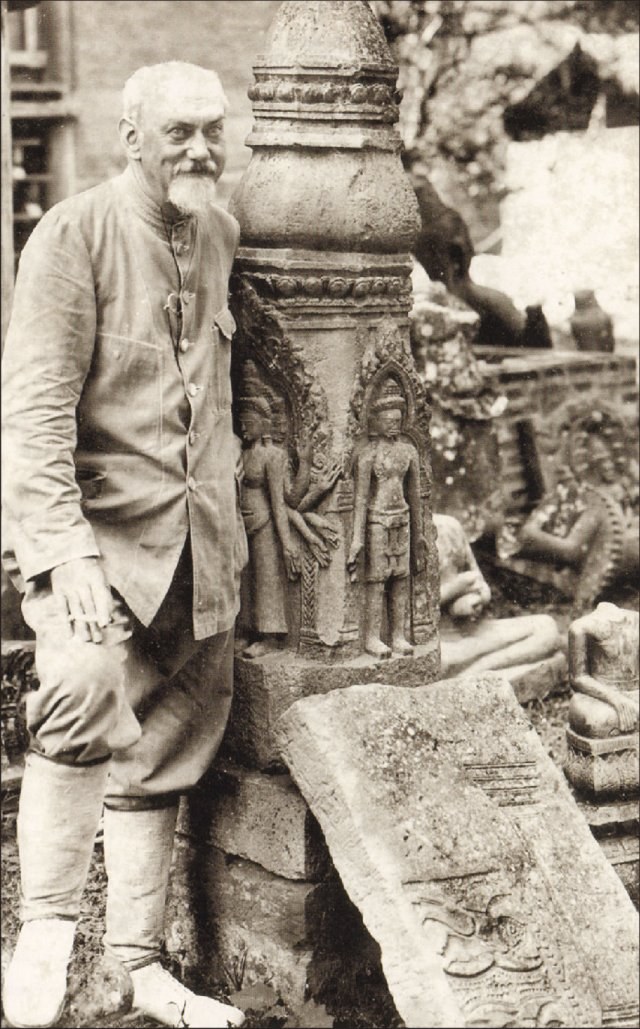
Henri Parmentier, circa 1930 (EFEO Archives, reprinted in W640)
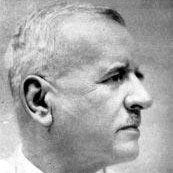
Victor Goloubew
Victor Goloubew (Виктор Викторович Голубев, 1878, Saint-Petersburg, Russia - 1945, Hanoi, Vietnam) was a researcher with EFEO for many years, and the first archeologist to extensively use aerial photography to survey Angkor territory in the 1920s.
A son of Russian aristocrats, he studied linguistics, archeology and art history, partly influenced by his uncle, Alexandr Golubev, a distinguished sinologist. His PHD thesis dealt with Marivaux's writing. Living in Paris at the turn of the 20th century, he befriended Auguste Rodin, who had recently discovered the art of Royal Ballet of Cambodia. The sculptor made a bust of Goloubew's wife, Natalia (Nathalie, nicknamed Donatella by d'Annunzio) Cross (26 Aug.1879, Vyborg, Russia, 1 Nov, 1941, Meudon, France). After Natalia left him for the notorious (and quite sulfurous) poet Gabriele d'Annunzio, Goloubew managed to financially help the bohemian singer-translator praised for her beauty, until her death in poverty in 1941. [see an account of d'Annunzio-Natalia's affair by Jean Despert, 1974]
In 1920, Goloubew went to Angkor with Henri Parmentier and Louis Finot. His research on Banteay Chhmar, Banteay Srei, Banteay Samre, Wat Phou or the Bakheng, made him a leading expert in iconography and archeological photography. Earlier, he had founded in Paris the review Ars Asiatica.
He also studied extensively the ruins of Sambor Prei Kuk and the Kulen Mountain, as well as the sites of the Thanh Hóa Province in Vietnam. A close collaborator of George Cœdès, he was appointed Director of the Louis Finot Museum in 1936. The year before, he was awarded the Herbert Giles Prize by Académie des inscriptions et belles-lettres for his work, particularly his findings in Angkor Thom.
His political involvement with the Axis forces during Second World War II has tainted his reputation as an archeologist and Khmer civilization specialist.

(with leading scholar George Coedes (center) in Phnom Penh)

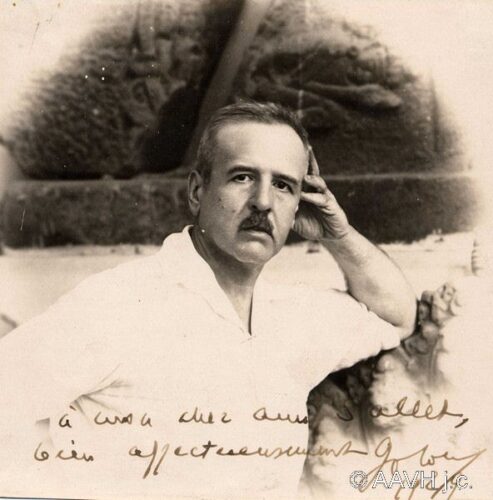
A 1929 Goloubew portrait autographed to Albert Sallet (Source AAVH)
